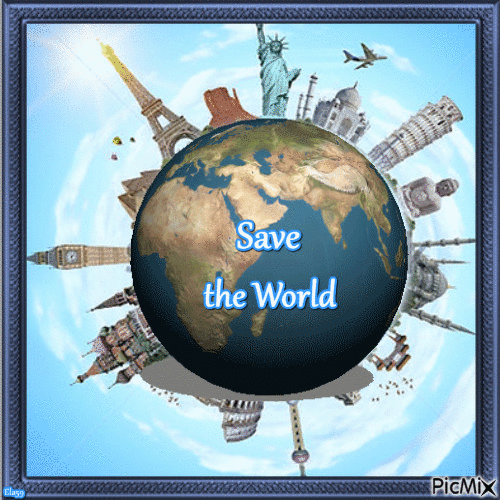Courtesy - https://i0.wp.com/gethappythoughts.org/wp-content/uploads/dance-final-min.jpg
-----------------------------------------------------------------------------------------------------------------------------
I confess that I am just a seeker, and I don't claim to have profound knowledge
-----------------------------------------------------------------------------------------------------------------------------
Stephen Hawking stated that the universe was not there forever and that time had a beginning.
The observable universe began with the Big Bang, which happened 13.8 billion years ago, and with it, the concept of time.
What caused the Big Bang?
Some physicists believe that before the Big Bang there was an "initial singularity," which was infinitely dense and contained all the mass and spacetime of the universe. There was a temporary change in the amount of energy within it, which caused it to rapidly expand to what is known as the "Big Bang."
Spacetime is the result of an event that was triggered.
What triggers it is the quest of the scientists.
Whoever triggers it is the quest for the believers.
"Who" has to be there for "What" to happen.
Genesis of Rudra
According to the Shiva Purana, once the Rakshasas defeated the Devatas and banished them from Amravati. The Devatas sought help from Maharishi Kashyap. Maharishi Kashyap meditated and pleased Lord Shiva. He requested that Lord Shiva take birth in the form of his sons. Lord Shiva blessed Maharishi Kashyap and his wife, Surabhi, with eleven sons. They were known as the eleven Rudras, or ekadsh Rudras. Following are their names and significance:
1. Kapali: carries a human skull, or kapala, which symbolises detachment from the material world.
2. Pingal: celestial rhythm that governs the perpetual dance of creation and dissolution.
3. Bheem: protects the universe and upholds dharma with the immensely powerful energy of a storm.
4. Virupaksha: Virup means deformed, and Aksha means eyes, or odd-eyed. This Rudra has three eyes.
5. Vilohit: Vilohit means the bright red colour of burning fire. According to Shukl Yajurved Vilohit means innocent and pure. In this form Rudra destroys, lightens and purifies. He is also the celestial voyager, the divine force transcending all realms of existence. Omnipresent.
6. Shasta: This Rudra is protective and benevolent. Shasta means teacher, guide, lord, and ruler in Sanskrit.
7. Ajapaad: The one who stands on one leg. Lord Shiva drank Halahal poison in this form of Ajapaad Rudra.
8. Ahirbudhnya: Ahir means serpent. Budhnya means foundation or origin. In this form Rudra protects the universe by transforming into a divine serpent, or Rudra Sapra.
9. Shambhu: Sham=bliss, bhu=source. Shambhu means eternal bliss, which is due to the union of the innermost self, the Atman.
10. Chanda: This fiercest form of Rudra protects the universe by destroying negative energies.
11. Bhav: This Rudra takes away the suffering and is both compassionate and fierce. Lord Hanuman is the incarnation of Bhav Rudra.
Rudra is the one who roars, bursts, or explodes in fiery red. (The Big Bang that scientists talk about.)
-----------------------------------------------------------------------------------------------------------------------------------------------------------------------------------------
According to Sadhguru (Jaggi Vasudev), Shiva means that which is not or unmanifested. Scientists say most of the universe is not visible but is very powerful. They don't know what it is and call it dark energy. In Yogic culture, this is referred to as Kala. In Yogic culture, time and space are not separate. Time is the reason for space. Kala is both time and space. Kala means darkness, and darkness means space. This is the unmanifested essence of Shiva, which cannot be understood by any sense organ or any instrument of measurement. Only that which stops and reflects light can be seen. If something is beyond the physical, there is no way to perceive it.
Sadhguru further states that Shakti, the energy of Shiva, caused him to become Rudra. Rudra is the one that roars. Rudra roared into an ellipsoid that scientists call the Big Bang. This ellipsoid is the first form, which is called "Linga, Lingam, or Shivling." When he settled down, it was manifested as the creation of a visible universe.
-----------------------------------------------------------------------------------------------------------------------------------------------------------------------------------------
There are many gods and goddesses in Sanatan dharma; however, the Almighty, or Par Brahm, or the supreme energy, is one and does not have any form—"Nirakaar."
When the Almighty or Par Brahm took a form (became "Sakaar"), he and she appeared as Shiva.
Yes, Shiva is both he and she because Shiva (male) and Shakti (female) are inseparable. There can be no Shiva without Shakti. Shiva becomes Shava, or a corpse without Shakti.
Shiva is the Trinity (Brahma, Vishnu, and Mahesh). Those who differentiate between the Trinity, viz., Brahma, Vishnu, and Mahesh, or their better halves, or try to figure out who is bigger, do not please either one of them.
Shiva has five functions (Panchanan Shiva or Sada Shiva).
1. Shristi, or Creation: Shiva is Brahma as a creator. Brahma was created by Vishnu and is ten millionths of Vishnu.
2. Sthithi, or preservation: Shiva is Vishnu as a preserver. Vishnu was created by Rudra and is 10 millionths of Rudra.
3. Samhara, or Annihilation: Shiva is Rudra, the annihilator. Rudra is the incarnation of Shiva and is one thousandth of Mahesha.
4. Tirobhava, or concealment: Shiva is Mahesha as concealer, who conceals and deludes to maintain order and stability. Mahesha is the incarnation of Shiva and is one thousandth of Shiva.
5. Anugraha, or Liberation: Shiva blesses his creations with the truth beyond his Maya or delusion.
The period of time is defined by the creator, Shiva, for Mahesha. Mahesha for Rudra, Rudra for Vishnu, Vishnu for Brahma, and Brahma for the rest of the Almighty’s creations
Our planet’s age is estimated to be 4.6 billion years.
Sanatan dharma has four yugas, or eras, which map to the four ages of Greek mythology.
1. Sat Yug (1,728,000 human years) - Golden Age
2. Treta Yug (1,296,000 human years) - Silver Age
3. Dwapar Yug (864,000 human years) - Bronze Age
4. Kal Yug (432,000 human years) - Iron Age
Every yuga, or era, is characterised by diminishing human morals and their consequences.
Sat Yug: Humans had the highest moral standards - 100% virtuous; average height was 31.5 feet; and average life expectancy was 100,000 years.
Treta Yug: Human morals diminished by 25% (75% virtuous, 25% sinful); the average height was 21 feet; and the average life expectancy was 10,000 years.
Dwapar Yug: Human morals diminished further by 25% (50% virtuous, 50% sinful); the average height was 10.5 feet; and the average life expectancy was 1,000 years.
Kalyug: Human morals diminished further by 25% (25% virtuous, 75% sinful); the average height was estimated to be 5.25 feet; and the average life expectancy was estimated to be 100 years (beginning of the Kalyug).
The four yugas, or chatur yugas, are cyclical, and they continue till the life span of Lord Brahma.
One day of Brahma is known as a Kalpa or aeon, which consists of 1000 Chaturyg.
1 Chatur yuga = 4.32 million human years, so 1 Kalpa = 4.32 million * 1000 = 4.32 billion human years.
2 Kalpas = 1 day and night of Lord Brahma = 8.64 billion human years.
1 month of Brahma consists of 30 * 2 kalpas.
1 year of Brahma = 12*30*2 Kalpas = 3,110,400,000,000 human years.
Or 3 trillion, 110 billion, and 400 million human years.
The life span of Brahma is 100 Brahma years, or 311,040,000,000,000 human years.
Or 311 trillion, or 40 billion human years.
The life span of Vishnu is 10 million Brahma years.
The life span of Rudra is 10 million Vishnu years.
The life span of Mahesha is 1000 Rudra years.
The life span of Shiva (as Sakaar Parbrahma) is 1000 Mahesha years.
Shiva, as Nirakaar Parabrahma, or the Almighty, has no beginning and no end.
Shiva is omnipresent.
Shiva is the supreme energy and is beyond time. All energies emerge from Shiva and ultimately merge into Shiva.








